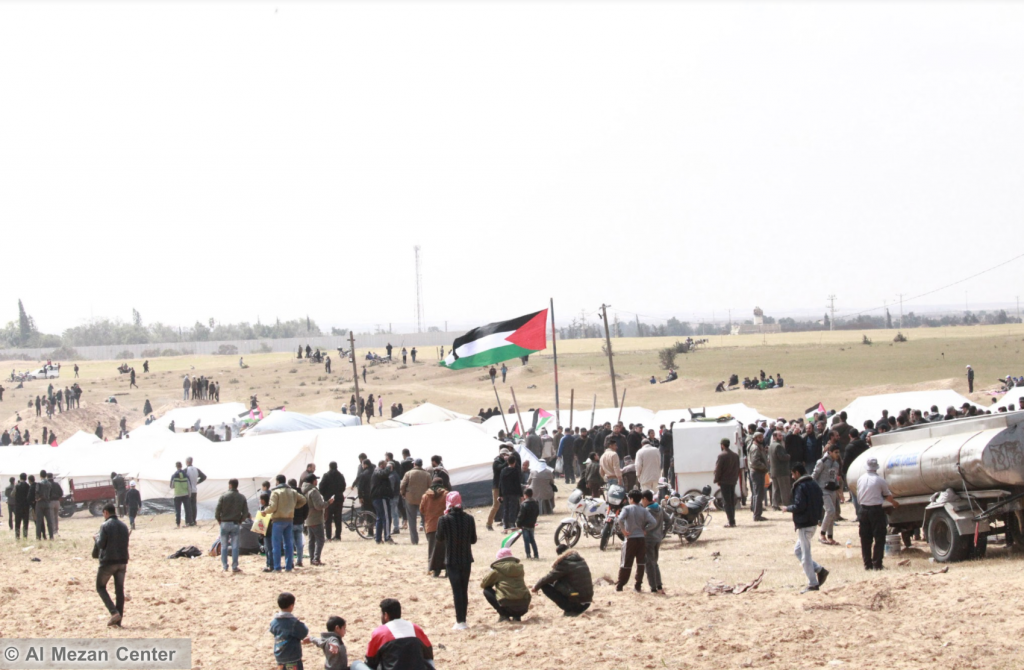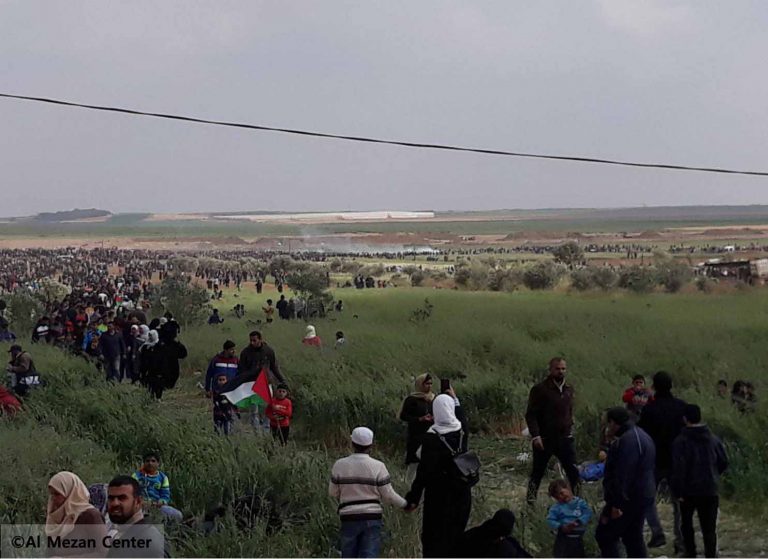After the Friday prayer ended and we had our lunch, me, my sister and my friend advanced among the youth gathered close the separation fence (…) I was standing about 40 meters from the eastern fence, as I carried the flag and headed toward (…) [I] fell on the ground, and I felt pain in my right leg (…). After receiving first aid by doctors, I was taken to Abu Yousef Al-Najjar Hospital, where it was found that I had been shot” (Al Mezan Center for Human Rights, 2018)

The OHCHR annual report of the on accountability and justice for violations in the OPT unravels the way impunity for such violations is fed. According to the UN “the report says that 19 months after the start of the Great March of Return, the Israeli military system had delivered only one sentence in relation to ‘possible unlawful acts’ by Israeli security forces.”The consequences for those injured in the demonstrations are amplified by the rampant poverty and unemployment. The story of Adil Abou Shayra, a Gazan refugee of 59 years old, is particularly telling. According to Al Mezan, after being shot in his left leg during his participation in the Great March of Return, medical personnel could not save his limb, resulting in amputation. Adil tried to get by and find a job in the retail and restauration sectors, only to be rebuffed in numerous occasions because of his physical condition. Adil still awaits the financial aid requested to the Ministry of Social Affairs.More than two years after the beginning of these protests, little to nothing has changed. Worse even, the lives of Gazans, most of whom refugees, are today more difficult. According to Al Mezan, as of 29 February 2020, 217 people lost their lives during the Great March of Return, and up to 19,234 people were injured. Of the injured, 9,510 were shot with live ammunition including 2,125 children and 190 women.On a daily basis, Gazan refugees are confronted to many layers of oppression and injustice whose nature is in most cases political and manufactured by Israeli policy i.e. a policy of occupation, closure and collective punishment of Gaza and Gazans. Human rights organisations keep fighting for their rights. The recent “lifttheclosure” campaign led by Al-Haq, Al Mezan, the Palestinian Centre for Human Rights (PCHR) and Medical Aid for Palestinians (MAP) has a simple message: the only way to put an end to the human rights violations against Gaza’s population, including its 70% of refugees, is by addressing their roots causes by lifting the closure immediately.International actors, such as the EU, have allocated important funds to reverse the socio-economic situation in Gaza. Time and again, this has proven futile in fulfilling the basic rights of Gazans.This campaign comes a few weeks before Israeli plans to start legally annexing parts of the West Bank, in continuation of its overall policy of fragmentation of Palestinians. Annexation would only further this. In the meantime, the population of Gaza, a majority of whom are refugees, await for a just solution in a crumbling, man-made catastrophic environment that keeps deteriorating.


